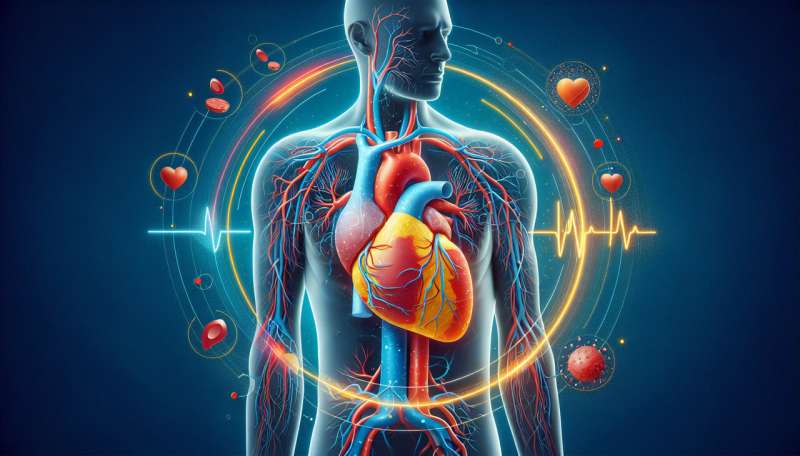Understanding How a Heart Attack Can Trigger Ventricular Fibrillation

Discover how a heart attack can disrupt the heart's protective mechanisms and lead to dangerous ventricular fibrillation, with new insights into potential therapies to prevent this life-threatening arrhythmia.
A heart attack, or myocardial infarction, often leads to severe complications, including the potentially fatal ventricular fibrillation (VF). Recent research from the University of Freiburg and Dalhousie University has shed light on why this arrhythmia occurs following a heart attack. The study reveals that during a heart attack, the natural protective mechanism that prevents mechanically induced arrhythmias becomes impaired. This mechanism involves the coordination between the heart's electrical and mechanical relaxation processes, which normally work in harmony to ensure proper heart function.
When a heart attack occurs, the coupling between electrical excitation and mechanical relaxation is disrupted. This disturbance results in a shortened electrical repolarization phase, causing the heart's mechanical actions to lag or become uneven. Such incoordination can create a vulnerable period during which abnormal electrical impulses may trigger ventricular fibrillation—a chaotic electrical activity that prevents the heart from pumping effectively.
The researchers demonstrated at the molecular level that structural and electrical changes during a heart attack contribute to this failure of the protective mechanism. Specifically, shortened electrical signals and uneven contractions increase the risk of electrical misfires. This discovery opens new avenues for targeted therapies, aiming to prevent VF by addressing these molecular disruptions.
Potential therapeutic options include blocking specific ion channels, buffering calcium levels, or reducing oxidative stress with antioxidants. These interventions could help restore the injured heart's natural protective coupling, thereby reducing the incidence of arrhythmias after a heart attack.
The findings are based on animal models, primarily rabbits, and underline the importance of further studies in larger animals and humans. The ultimate goal is to develop medications that can be administered during or after a heart attack to reduce the risk of life-threatening ventricular fibrillation, thereby improving patient outcomes.
This research highlights the intricate interplay between electrical signals and mechanical function in the heart, emphasizing the importance of maintaining this balance to prevent arrhythmias in cardiac patients.
Stay Updated with Mia's Feed
Get the latest health & wellness insights delivered straight to your inbox.
Related Articles
Innovative Online Toolkit Supports Better Dental Health for Autistic Children
A new online toolkit developed by the University of Leeds provides tailored guidance to help parents of autistic children improve dental health and reduce decay, promoting lifelong oral hygiene practices.
Advanced Heart Simulations Enhance Understanding and Treatment of Atrial Fibrillation
Cutting-edge computer simulations of the heart's electrical activity are providing new insights into atrial fibrillation, a common irregular heartbeat that can lead to severe health complications. Research aims to identify early intervention strategies to prevent long-term heart damage.
Using AI Scribes in Medical Consultations: What Patients Need to Know
AI scribes are transforming medical consultations by transcribing and drafting notes to save time, but they raise important privacy and safety concerns. Learn what patients should know about this emerging technology.
American Heart Association Highlights Benefits of Palliative Care for Critical Cardiovascular Patients
The American Heart Association emphasizes the importance of palliative care for patients with critical cardiovascular conditions to enhance quality of life, symptom relief, and personalized treatment planning.



